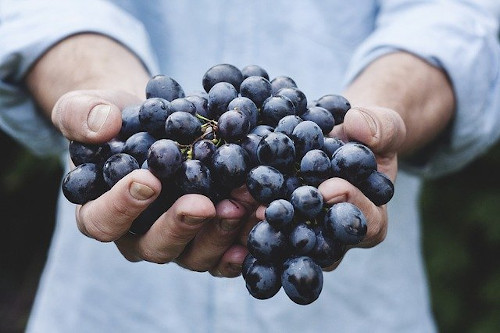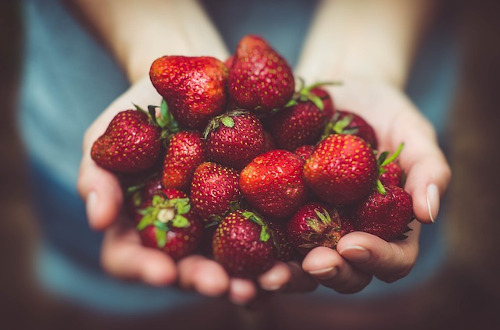Contents

Learn how to avoid angina pain and which angina foods to eat. Before we get to this heart-healthy foods list, let’s learn more about this condition. Angina pectoris consists of spasms or reversible narrowing of the coronary arteries. These arteries provide blood flow to the heart muscle, allowing it to function optimally.
Angina pectoris or angor pectoris manifests through intense, oppressive pain on the left side of the thorax, radiating down the left arm. It is generally experienced after some physical effort, intense emotion, or stressful situation. Contrary to an infarction (heart attack), angina is reversible and usually does not leave permanent heart damage. Diet greatly influences the condition and function of the coronary arteries.
Risk factors for angina are:
- Arteriosclerosis (narrowing and hardening) of the coronary arteries is one of its primary causes. A diet that is poor in plant-based foods and rich in saturated fats, along with tobacco and lack of physical exercise, is also one of its primary causes.
- A tendency to spasms or contractions of the smooth (involuntary) muscles, such as those that form the wall of the arteries. A deficiency of magnesium and other nutrients fosters these spasms.
Angina Foods to Eat

GRAPES: These are rich in phytochemicals such as flavonoids and resveratrol (particularly black grapes), dilating coronary arteries and improving blood circulation. Grapes are number one among the best Angina foods to eat. They’re the most cardio-protective fruit existing.
WALNUT: This is an ideal food for the heart because of its richness in heart-healthy fatty acids and vitamin B1 and its cholesterol-reducing effect. It improves the condition of the coronary arteries and helps avoid angina.
ONION: Onions prevent arteriosclerosis, improve blood fluidity, and improve blood flow through the coronary arteries. Their essential oils exercise a mild antispasmodic effect that may also affect the coronary arteries, contributing to avoiding angina. Onions are more effective raw than cooked.
WHOLE GRAINS: They help prevent arteriosclerosis and contribute to improved blood circulation in the coronary arteries.
BARLEY: Regardless of how this whole grain is prepared, barley is a good preventive measure for cardiovascular disease, particularly in the arteries.
RYE: Rye helps make the arterial walls more elastic and the blood more fluid, improving circulation in the coronary arteries.
POTATO: Potatoes are low in sodium and rich in potassium. Baked or cooked with vegetables, potatoes should be part of the heart patients’ diet.
Squash is an Excellent Food for Angina
PEACH: Peaches facilitate the work of the heart because of their richness in antioxidant vitamins, potassium, and magnesium. This is particularly beneficial when there is insufficient blood flow to the heart muscle itself due to coronary artery disease.

STRAWBERRY: These contain a powerful antioxidant that neutralizes the harmful effects of free radicals on the arteries. By improving the condition of the arteries, including the coronary arteries, strawberries stop the progression of angina toward a possible heart attack.

SQUASH: This is ideal amongst the angina foods to eat because it is good for cardiovascular patients in general. It contains virtually no fat or sodium, while at the same time it is a good source of antioxidant vitamins such as C and E, and beta-carotene (provitamin A). It is rich in potassium, which fosters the proper function of the cardiovascular system.
ZUCCHINI: These are beneficial for cardiac patients because they contain virtually no fat or sodium. At the same time, they are a good source of cardio-protective B vitamins, particularly folates.
CASHEW: These are of help against coronary artery spasms that cause angina because of their magnesium and B vitamin content.
MANGO: These protect the coronary arteries due to their content of three powerful antioxidant vitamins: provitamin A (beta-carotene) and vitamins C and E.
NON-ALCOHOLIC WINE: This provides some of the cardio-protective phytochemicals and nutrients present in grapes. Non-alcoholic wine is preferable to alcoholic wine, although it is not as healthy as grapes or pure grape juice.
Angina Pectoris Foods to Avoid
SATURATED FAT: Consumption of saturated fat promotes the narrowing of the coronary arteries that supply blood to the heart, thus causing angina.
SODIUM: A sodium-rich diet, which is most commonly found in common table salt, gives arterial walls o propensity to contract. When this contraction occurs in the coronary arteries, angina is the result.
DISCLAIMER: Any content on this website is presented solely for educational and informational objectives. You should not rely on the information provided as a replacement for advice, diagnosis, or treatment from a qualified medical expert. If you are pregnant, nursing, or have any preexisting medical concerns, you should talk to your doctor before using any herbal or natural medicines.
REFERENCES
- George D. Pamplona-Roger, M.D. “Encyclopedia of Foods and Their Healing Power.” George D. Pamplona-Roger, M.D. Encyclopedia of Foods and Their Healing Power. Trans. Annette Melgosa. Vol. 2. Chai Wan: Editorial Safeliz, 2005. 54. [Angina foods to eat]
- American Heart Association. (2023, May 26). Angina (Chest Pain). https://www.heart.org/-/media/files/health-topics/answers-by-heart/what-is-angina.pdf
- Harvard Health Publishing. (2021, September 30). Diet and Lifestyle for Angina. https://www.health.harvard.edu/a_to_z/angina-a-to-z
- Mayo Clinic. (2023, June 22). Angina. https://www.mayoclinic.org/diseases-conditions/angina/symptoms-causes/syc-20369373
